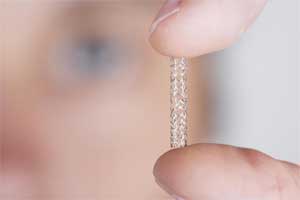- Home
- Editorial
- News
- Practice Guidelines
- Anesthesiology Guidelines
- Cancer Guidelines
- Cardiac Sciences Guidelines
- Critical Care Guidelines
- Dentistry Guidelines
- Dermatology Guidelines
- Diabetes and Endo Guidelines
- Diagnostics Guidelines
- ENT Guidelines
- Featured Practice Guidelines
- Gastroenterology Guidelines
- Geriatrics Guidelines
- Medicine Guidelines
- Nephrology Guidelines
- Neurosciences Guidelines
- Obs and Gynae Guidelines
- Ophthalmology Guidelines
- Orthopaedics Guidelines
- Paediatrics Guidelines
- Psychiatry Guidelines
- Pulmonology Guidelines
- Radiology Guidelines
- Surgery Guidelines
- Urology Guidelines
Stent selection for PCI in high bleeding risk patients

With an increase in population, more and more elderly patients are coming to cath lab with serious comorbidities causing a high degree of bleeding.
The causes for this may be varied including the presence of atrial fibrillation or any other indication for the administration of oral anticoagulants (VKA) or novel oral anticoagulants (NOACS) may lead to this condition. The patient may have a history of previous bleeding disorders or any other haematological disorder or the presence of coagulation diseases. The need for treatment with steroids or NSAIDS or the presence of renal dysfunctions makes a particular patient high risk for bleeding and the continuation of dual/triple antiplatelet is extremely risky.
In reality, as a part of the necessary treatment by primary coronary intervention such patients with high bleeding risk are not uncommon. In Bern PCI registry around 11,000 persons undergoing PCI, high bleeding risk status was present in 40% of patients.
The outcome of bleeding whether gastrointestinal or intracranial after anticoagulants in atrial fibrillation is associated with a very high degree of all-cause mortality at 1 or 2 years.
At one place where continuation of anticoagulants (DAPT) therapy is associated with high bleeding incidence. On the other hand, early withdrawal is also associated with increased mortality. Necessitating special strategy planning for these patients if required to be undertaken PCI.
There had been an enormous innovation and research in stent technology. Paclitaxel has been nearly replaced by sirulimus analogs like sirolimus, everolimus, zotarolimus, etc.
The polymer material has also been changing from durable polymer to biodegradable polymer from stainless steel to cobalt chromium. The strut thickness has also been progressively and innovatively decreasing from 140 millimicron cypher to 60 um orsero.
It has been proved that now the new generation stents are safe and more efficacious than the first generation stents or bare metal stents. The bench studies have studied that thinner the stent, more early the endothelialization takes place which has been proven by optical coherence tomography. Most of the struts get covered in 3 months.
Zeus Trial compared endeavor Zeusstent vs bare metal stent and randomized DAPT for 1 month in both arms and found that E-ZES was much better in terms of death, MI, TLR and stent thrombosis and lately 2years follow up of 2500 patients in leaders free trial was published where the polymer free DES bioscience was compared with bare metal stents in patients with high bleeding risk and all adverse event diameters like death, MI, stent thrombosis, TLR was found to be much less in drug-coated stent. The senior trial was conducted in which 1200 patients >75 years were randomized to synergy EES and with BMS. The antiplatelet therapy was given for one month instable CAD and 6 months in acute coronary syndrome.
PCI with synergy was found to be better than PCI with bare metal stents for all cause of death, MI, stroke, TLR.
Presently>15trials are ongoing taking different newer biodegradable polymer and durable polymer, thin strut or ultra thin strut having a DAPT for one month to three months vs the standard 12 months which will provide device specific data on the safety of 1 month or 3 months.
DAPT as for today concludingly,
- Patients undergoing PCI should be assessed for high bleeding risk features and consideration should be done for shorter DAPT course.
- Metallic newer generation DES with thin or ultrathin strut thickness with a biodegradable or durable polymer or without polymer should be used as per evidence in different trials.

Disclaimer: This site is primarily intended for healthcare professionals. Any content/information on this website does not replace the advice of medical and/or health professionals and should not be construed as medical/diagnostic advice/endorsement or prescription. Use of this site is subject to our terms of use, privacy policy, advertisement policy. © 2020 Minerva Medical Treatment Pvt Ltd